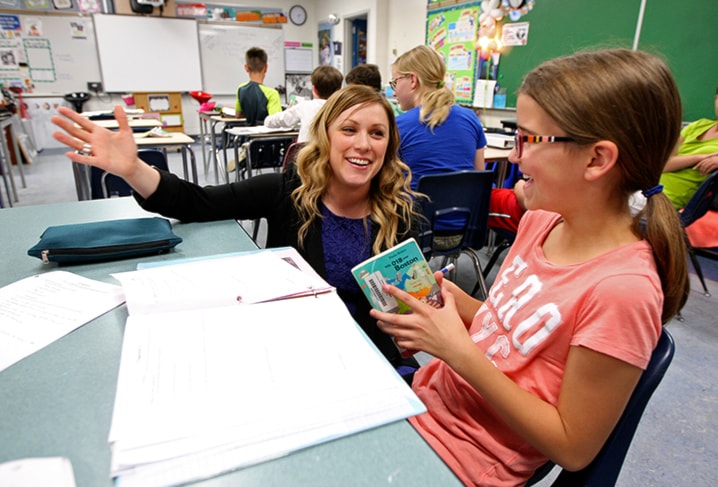About 30 years ago when Red Deer parents wanted their children in French immersion, the main idea was that one day it would offer better employment opportunities within an officially bilingual Canada.
That’s changed now, said Rob Porkka, who has been involved almost from the beginning with French immersion in the Red Deer Public School District (RDPSD).
The French immersion program started with 15 kindergarten students in 1980 under the French Canadian Association of Red Deer.
The next year RDPSD took over the responsibility of it. The first French immersion class to graduate did so in 1993, from Lindsey Thurber Comprehensive High School.
Porkka said today about 10 per cent of students in the public district are French immersion students. There are about 1,100 students enrolled in the public system’s French immersion now.
That compares closely with Red Deer Catholic Regional Schools, where about 1,050 students, or 11 per cent, are enrolled this year, said Kathleen Finnigan, the district’s associate superintendent of Inclusive Learning. École Camille J. Lerouge School will make the leap from a dual-track French immersion school to Red Deer’s first single-track French immersion centre in September. The pre-kindergarten program will be in English but kindergarten to Grade 9 will be French immersion.
The demand for French immersion in Ontario has been so strong that some school boards have capped Grade 1 enrolment with parents forced to go to a lottery system.
It’s had a negative affect on the English programs in some cases. It’s put a strain on finding qualified teachers as well.
“We’ve never been at the point where you’ve had to camp out in order to get in. We’ve been able to accommodate pretty much anyone who is interested in getting in the program. But it’s always been growing,” said Porkka.
“We’re just a nice medium-sized city and so far we’ve been able to do it all,” he said.
“I think the popularity today is driven more by parents realizing that kids need to have a leg up somehow and they’re going to have to work internationally.”
Porkka, director of international education and retiring this month, taught the public district’s first middle school French immersion students in 1986.
A bilingual country is part of the Canadian identity, but it’s also the idea that learning another language develops different thinking skills, different problem-solving skills, and helps to prepare students for global competencies. People are going to have to work in other places in the world and that’s what’s driving the demand to learn a second language more now, he said.
Alberta Education’s numbers show that last year about six per cent (42,285) of Alberta students were in French immersion in the province. The 2011 census, ranked Alberta fifth in bilingual population. There were 238,770 bilingual Albertans compared to 178,505 in 1996 — a 34 per cent increase. Overall last year, 29 per cent of kindergarten to grade 12 students (198,264) were enrolled in either French immersion, francophone or French second language programs in 2014-15.
He believes a healthy French immersion program includes teachers that are Canadian French native speakers and people who learned it as second language because they understand the process.
The public system has French teachers from New Brunswick, Quebec, France, Haiti and Switzerland. It now also have several teachers who took French immersion in the RDPSD and went on to become French immersion teachers within the same system.
Finnigan said that they attend a lot of job fairs in Alberta and in Eastern Canada to find French teachers. Recruiting is harder because there is an added component in trying to find teachers since the Catholic system is faith-based. The general problem of trying to recruit French immersion teachers is felt both provincially and nationally, she said.
One of their bigger problems is that it is difficult to obtain educational resources in French and that teachers spend a lot of time having to translate newer programs.
They have seen a 3.5-per-cent increase in French immersion enrolment in the past three years, Finnigan said.
barr@www.reddeeradvocate.com
